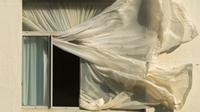The ways of the subconscious are infinite when reality becomes too oppressive and torment must be mitigated. Seized by doubts on the eve of his wedding to Effie, the young James is visited by a sylph in a dream. La Sylphide is an evanescent creature, the embodiment of the ideal woman and a metaphor for the freedom his marriage might steal from him. First performed in 1832 at the Paris Opera, Philippe Taglioni’s La Sylphide was the first work to draw inspiration from the Sturm und Drang literary movement. The misty forests of Scotland offer an ideal backdrop to the opposition between the real world and an inaccessible universe. Marie Taglioni, dressed in a long diaphanous white tutu performed the title role which was entirely choreographed on points, accentuating the ethereal sylph-like character of her character and outlining the emblematic silhouette of the ballerina. Unanimously praised by audiences and critics alike when first performed, La Sylphide left a lasting impression on a generation of poets and writers, including Théophile Gautier, the future librettist of Giselle, before disappearing from the repertoire at the end of the 19th century. In 1972, the ballet was faithfully recreated by Pierre Lacotte for the Paris Opera Ballet. Since then, its spell?binding subtlety has never ceased to fascinate, establishing it as the romantic ballet par excellence
Cast and Creative team for La sylphide at Opéra National De Paris - Palais Garnier
Music
Jean Madeleine Schneitzhoeffer
Libretto
Adolphe Nourrit
Choreography
Pierre Lacotte
After Philippe Taglioni
Set designs after Pierre Ciceri
Costume designs after Eugène Lami
Set design
Marie-Claire Musson
Costume design
Eugène Fresnay
Conductor
Ermanno Florio



